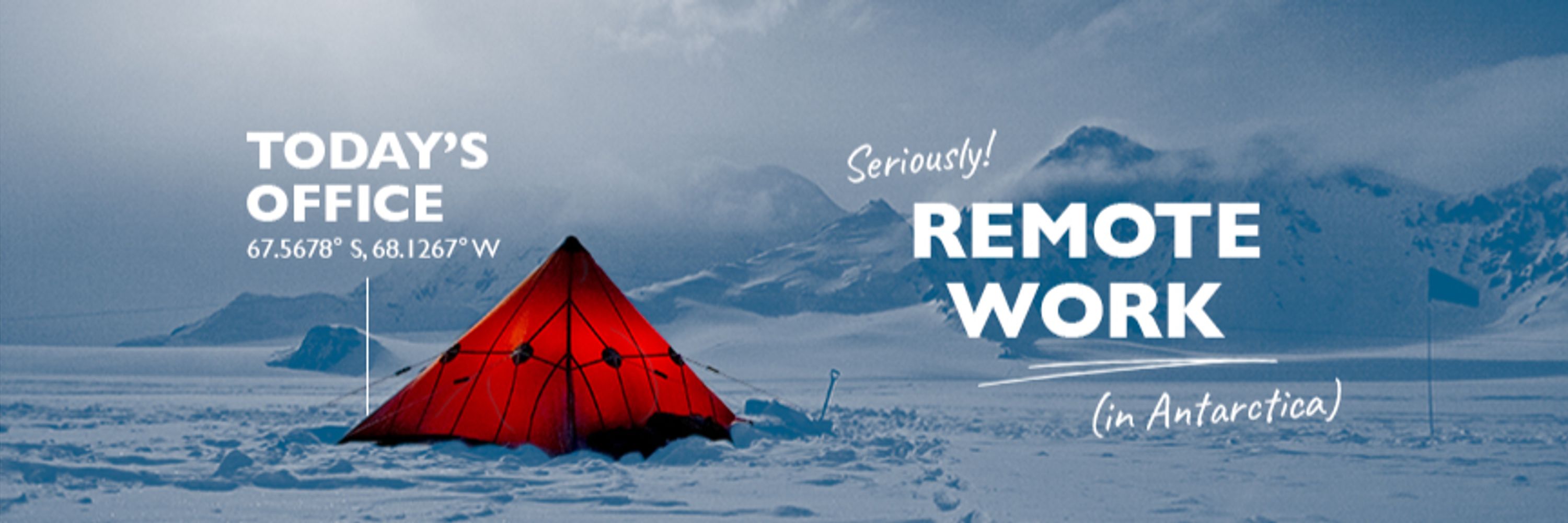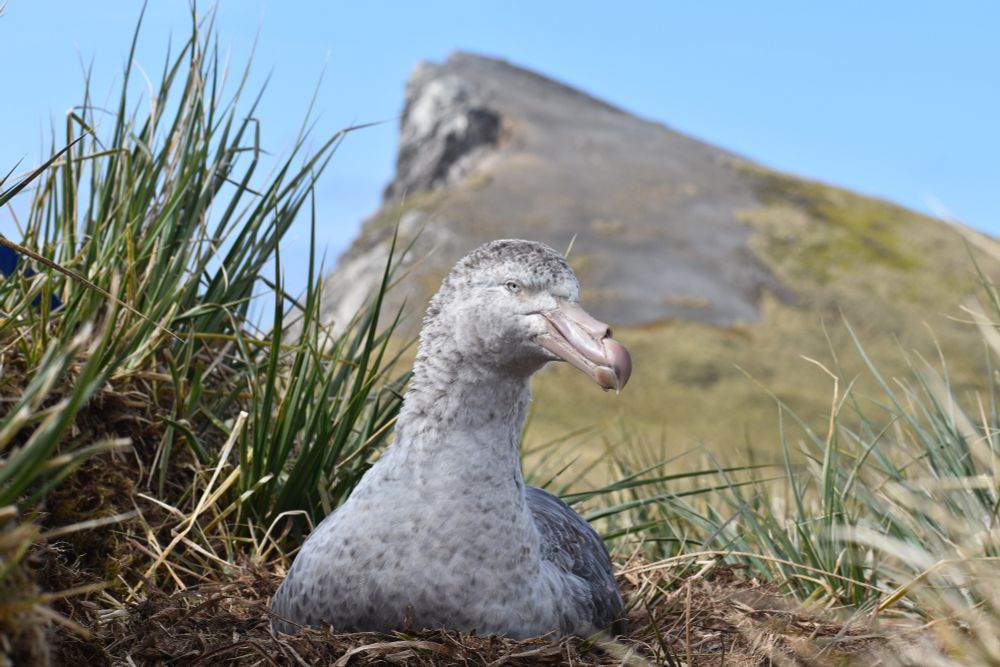
Looking for a seriously remote job? https://bas.ac.uk/vacancies
This team in the South Orkney Islands research seabirds and terrestrial ecology.
They were dropped off by RRS Sir David Attenborough - along with a band of helpers who cleared the snow, hauled in cargo, and helped bring power and water online 💙



This team in the South Orkney Islands research seabirds and terrestrial ecology.
They were dropped off by RRS Sir David Attenborough - along with a band of helpers who cleared the snow, hauled in cargo, and helped bring power and water online 💙
In this episode of Iceworld, host Nadia Frontier talks to Emma Pearce about exactly that.
Bonus points if you can tell us how many layers you heard Emma mention!
In this episode of Iceworld, host Nadia Frontier talks to Emma Pearce about exactly that.
Bonus points if you can tell us how many layers you heard Emma mention!
From heatwaves to intense storms, Michelle explains how the continent's 'memory' of extreme events means future impacts are likely to be amplified by past damage.
Listen now: https://tinyurl.com/4e4772yb

From heatwaves to intense storms, Michelle explains how the continent's 'memory' of extreme events means future impacts are likely to be amplified by past damage.
Listen now: https://tinyurl.com/4e4772yb
This long-term view at Bird Island also tells us about the wider health of the ecosystem and the impact of human activities like fishing.

This long-term view at Bird Island also tells us about the wider health of the ecosystem and the impact of human activities like fishing.
From 2004-10, she remained with the same male until he died. She found a new partner, with whom she has bred with every year since 2013.
Over her lifetime, the teams have seen her successfully rear nine chicks, with eight losses.

From 2004-10, she remained with the same male until he died. She found a new partner, with whom she has bred with every year since 2013.
Over her lifetime, the teams have seen her successfully rear nine chicks, with eight losses.
She hatched there in 1989, making her an impressive 36 years old.
This season, she decided to build her nest next to the path, where the team greet her every day as they go past 🪶

She hatched there in 1989, making her an impressive 36 years old.
This season, she decided to build her nest next to the path, where the team greet her every day as they go past 🪶
All part of modernising our largest research station for the future of polar science 🧊
Image credit: BAM 📷
Read more: www.bas.ac.uk/media-post/2...



All part of modernising our largest research station for the future of polar science 🧊
Image credit: BAM 📷
Read more: www.bas.ac.uk/media-post/2...
Today is a special day in the international polar science and operations community when we celebrate the contributions of our LGBTQ+ colleagues.
Polar science is the ultimate teamwork environment - and making sure everyone feels included and welcome is crucial.

Today is a special day in the international polar science and operations community when we celebrate the contributions of our LGBTQ+ colleagues.
Polar science is the ultimate teamwork environment - and making sure everyone feels included and welcome is crucial.
After a stop at Neumayer, serenaded with a horn farewell, the team reached Halley - only to find one door had reinvented itself as a wall… a wall of snow.
They’re melting it in tea urns for water and slowly getting the station ready for the season.




After a stop at Neumayer, serenaded with a horn farewell, the team reached Halley - only to find one door had reinvented itself as a wall… a wall of snow.
They’re melting it in tea urns for water and slowly getting the station ready for the season.
Her work has transformed understanding of Antarctic ice-shelf melt and future sea-level rise.
She says, “It was a lovely surprise to hear that I'd won this prestigious award."

Her work has transformed understanding of Antarctic ice-shelf melt and future sea-level rise.
She says, “It was a lovely surprise to hear that I'd won this prestigious award."
📸 Kate Owen

📸 Kate Owen
📸Antony Clements

📸Antony Clements
📸 Kate Owen

📸 Kate Owen
📅 The virus (known as HPAI H5N1) arrived at South Georgia in late 2023
⬇️ Between 2022 and 2024, colonies of breeding southern elephant seals declined by an average of 47%
📸 Kate Owen

📅 The virus (known as HPAI H5N1) arrived at South Georgia in late 2023
⬇️ Between 2022 and 2024, colonies of breeding southern elephant seals declined by an average of 47%
📸 Kate Owen
Here's what we know so far...
📸 Connor Bamford

Here's what we know so far...
📸 Connor Bamford
And does it matter if they do?
These questions are answered by BAS glaciologist Dr Hamish Pritchard in a major new UNESCO report for the UN International Year of Glaciers' Preservation.
Read the report here: https://ow.ly/TFTH50XptZc


And does it matter if they do?
These questions are answered by BAS glaciologist Dr Hamish Pritchard in a major new UNESCO report for the UN International Year of Glaciers' Preservation.
Read the report here: https://ow.ly/TFTH50XptZc
Marine scientists Katie Wells and Rhi Nichol took a moment to capture this serene scene while monitoring elephant seals in South Georgia, near Antarctica.
#WeekendMood
Marine scientists Katie Wells and Rhi Nichol took a moment to capture this serene scene while monitoring elephant seals in South Georgia, near Antarctica.
#WeekendMood
The team use these reports and webcams at Halley to judge conditions - really tricky predict in detail over such a large and remote area.


The team use these reports and webcams at Halley to judge conditions - really tricky predict in detail over such a large and remote area.
This is where the team are now, waiting for a window of good weather so they can fly on to Halley, via Neumayer Research Station, run by the German Antarctic Programme.

This is where the team are now, waiting for a window of good weather so they can fly on to Halley, via Neumayer Research Station, run by the German Antarctic Programme.
The team are on the way to Halley Research Station on the Brunt Ice Shelf.
They were meant to get to Halley today, but weather on the rest of their route is causing delays. Not a bad view to wait with though, eh?
The team are on the way to Halley Research Station on the Brunt Ice Shelf.
They were meant to get to Halley today, but weather on the rest of their route is causing delays. Not a bad view to wait with though, eh?
It's giving Batcopter 🚁
The UK's first major aerial survey of the Antarctic Peninsula was 1955-57. The Falkland Island Dependencies Aerial Survey Expedition used flying boats and helicopters ⬇️

It's giving Batcopter 🚁
The UK's first major aerial survey of the Antarctic Peninsula was 1955-57. The Falkland Island Dependencies Aerial Survey Expedition used flying boats and helicopters ⬇️
It's the new beating heart of the UK's largest Antarctic station, bringing much of the station under one roof.

It's the new beating heart of the UK's largest Antarctic station, bringing much of the station under one roof.
What's the hurry? ⏰ Most creatures in the Southern Ocean are adapted only for the cold.
We're racing against the clock to understand what animals live there and which species are at greatest risk.
🧵 3/4


What's the hurry? ⏰ Most creatures in the Southern Ocean are adapted only for the cold.
We're racing against the clock to understand what animals live there and which species are at greatest risk.
🧵 3/4
"The images are packed full of weird and unusually shaped animals, often living on top of each other - some of which have never been seen before."
The team trained AI to identify seafloor creatures near Antarctica, like starfish, corals, and fish.
🧵 2/4


"The images are packed full of weird and unusually shaped animals, often living on top of each other - some of which have never been seen before."
The team trained AI to identify seafloor creatures near Antarctica, like starfish, corals, and fish.
🧵 2/4
Our AI and science teams have been using machine learning to label surveys of the Antarctic seafloor. It's dramatically sped them up from <8 hours per photo, to a few seconds.
This one looks like a quick job. But stay with us as we up the difficulty...
🧵 1/4


Our AI and science teams have been using machine learning to label surveys of the Antarctic seafloor. It's dramatically sped them up from <8 hours per photo, to a few seconds.
This one looks like a quick job. But stay with us as we up the difficulty...
🧵 1/4

